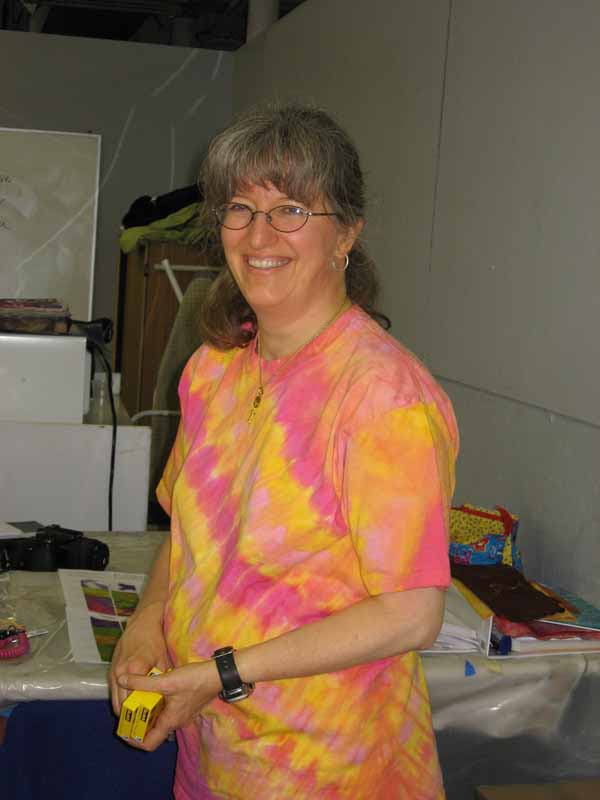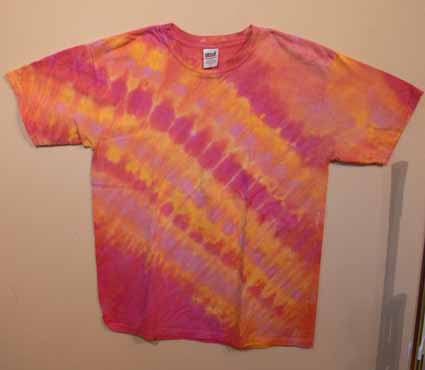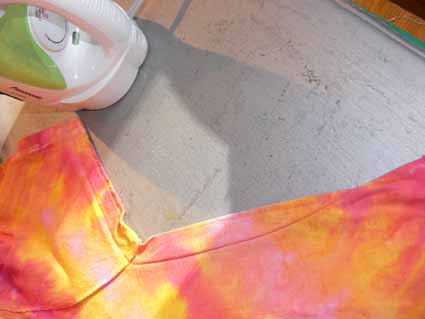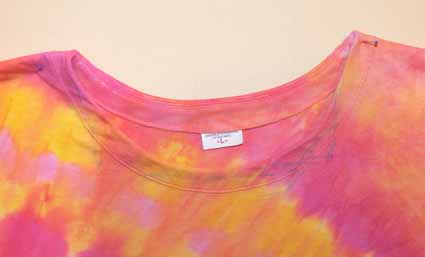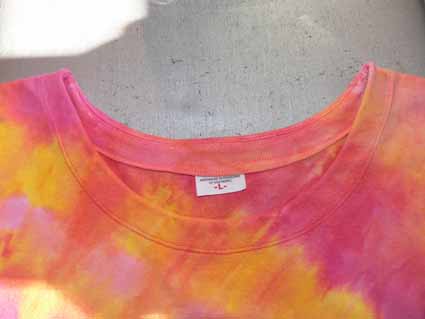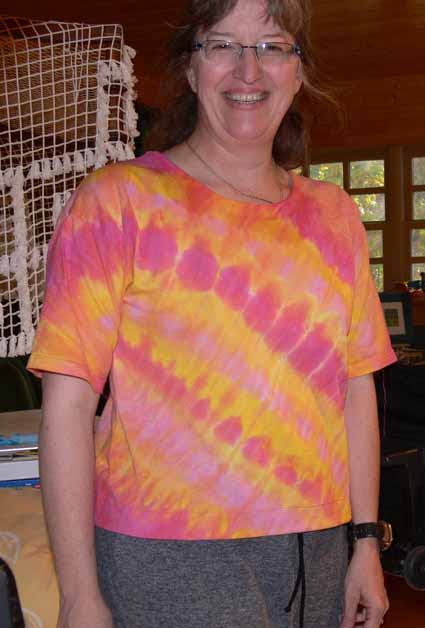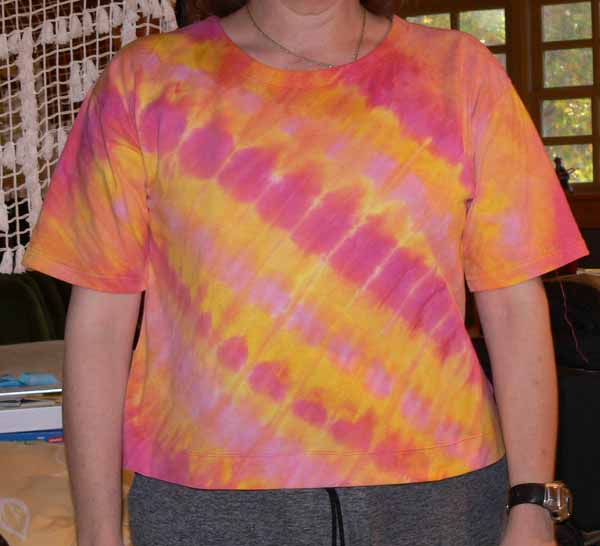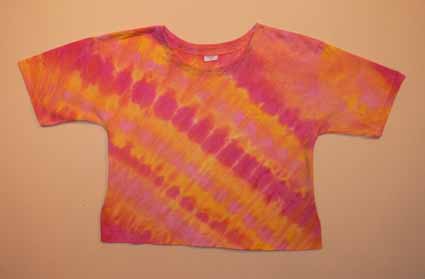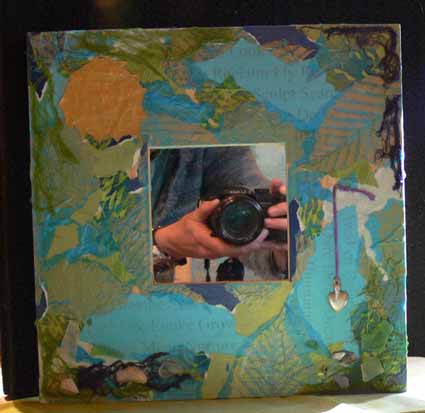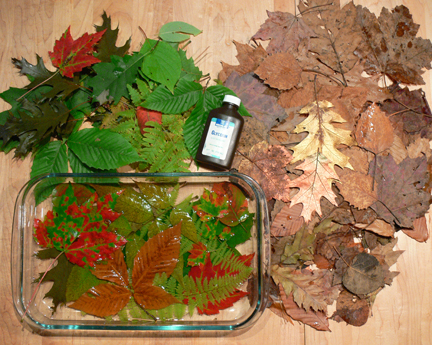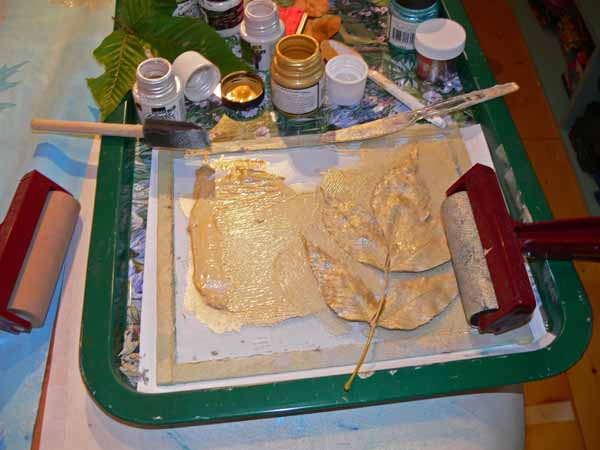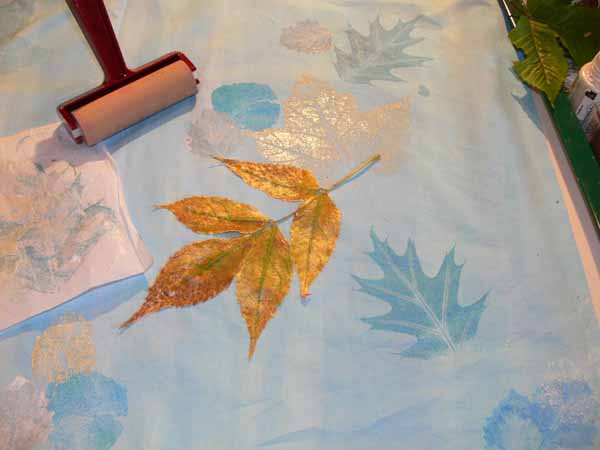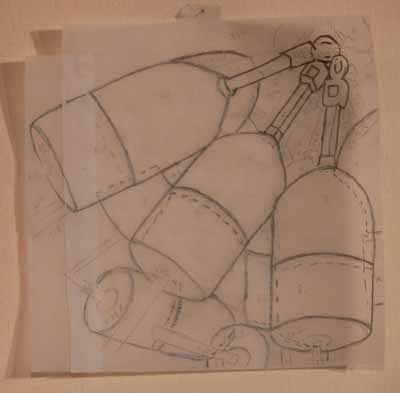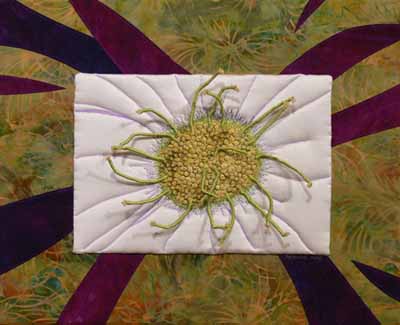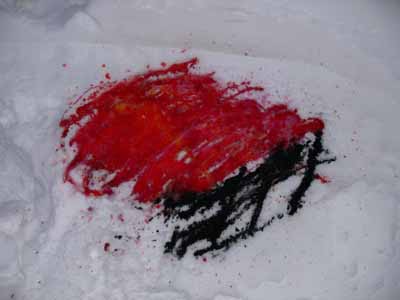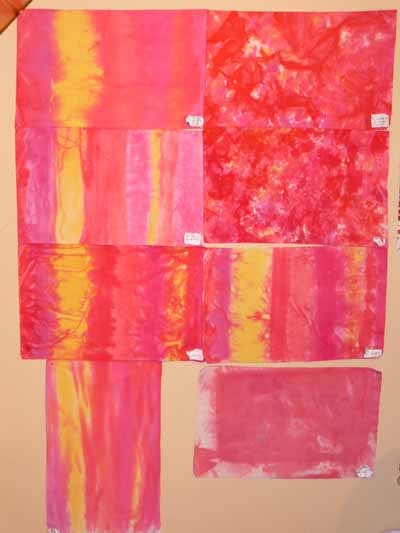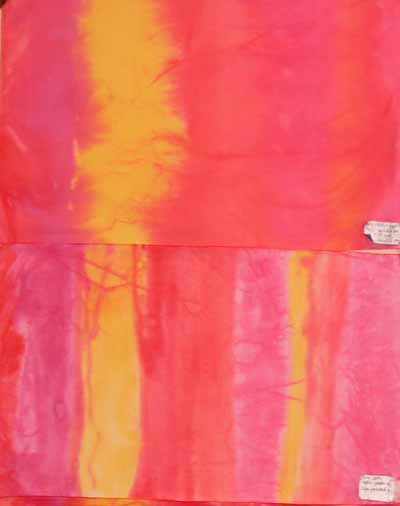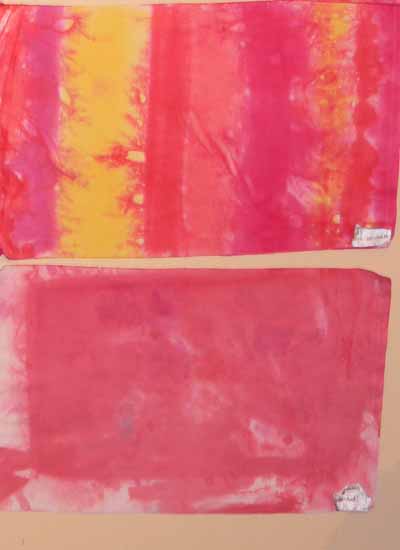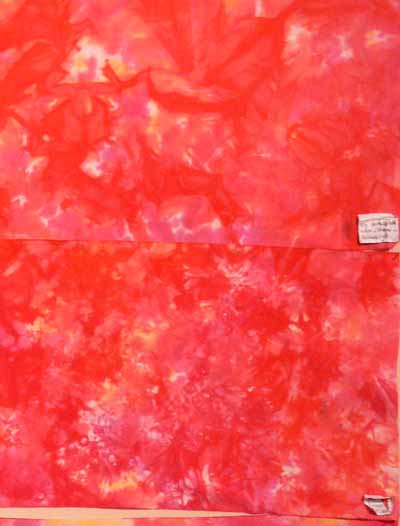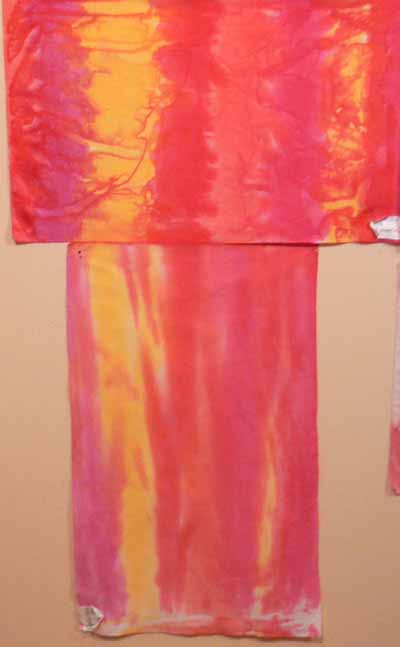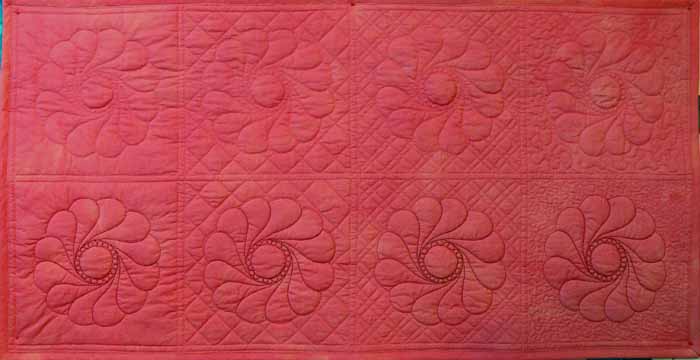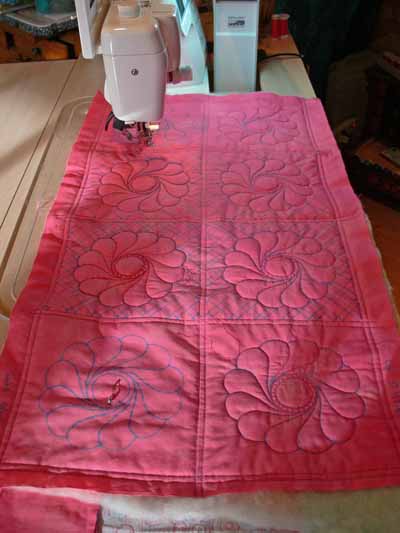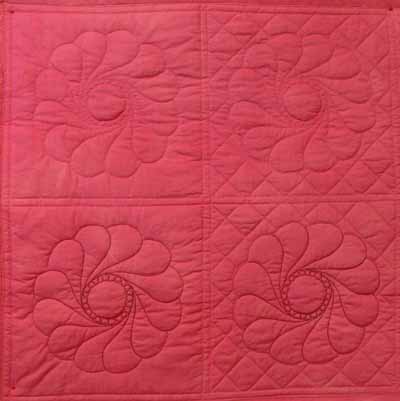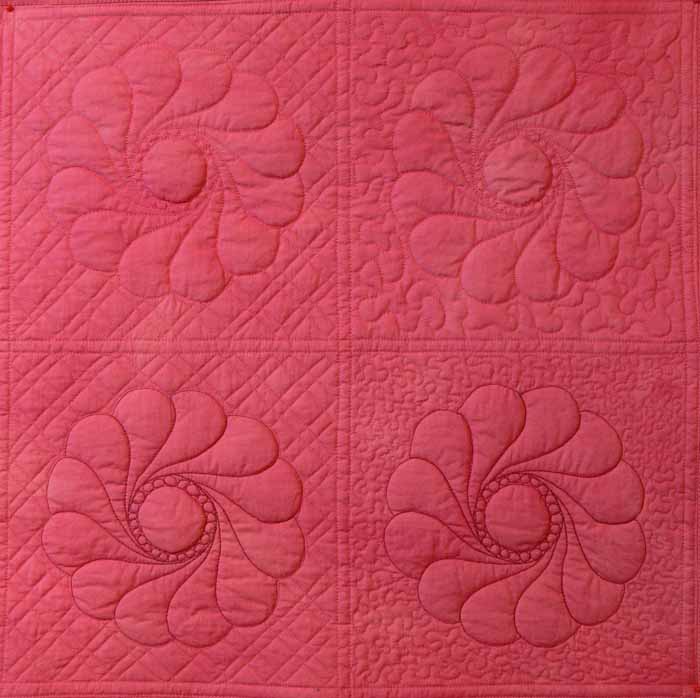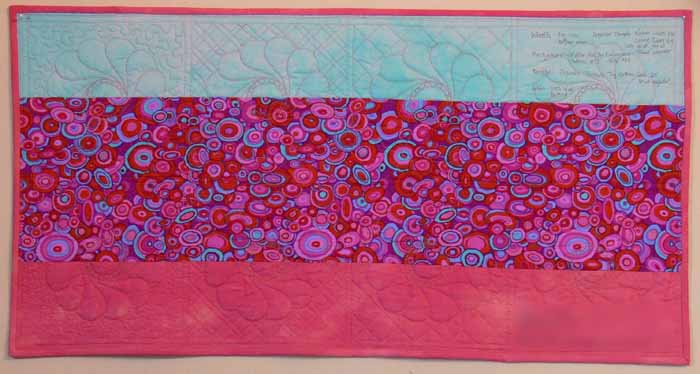Refining the t-shirt–how to take a boring t-shirt to fitted and fine!
Friday, November 14th, 2008Quite a long time ago, about a year in fact, I took my second dyeing workshop with Carol Soderlund (wonderful! highly recommended! go here to find out more!). I tried again to get my dream-colored t-shirt, and this time succeeded! Here’s a picture Beth P. took of me (weighing, sigh, less than I do now):
I knew back then that I wanted to re-make the shirt into a nicer top, but ProChem only had t-shirts in stock, plain old T’s. Here is what the shirt looked like before I took to it with pins, sewing machine and scissors in late October:
I used fuchsia dye, the other red that is MX R4 (Fuchsia is 8R), a warm yellow and a cool yellow… it was pleated on the diagonal with the lines running from upper left shoulder to right hip. The dye was then poured – squirted – painted on in the opposite diagonal.
First, I pinned out what I thought I wanted to take in on the sides and underarm, then went into the bathroom (which has a low enough mirror) to see how long I wanted the shirt to be. I ended up cutting 5 1/2 inches off the bottom, then taking a 1 1/2″ hem. I used a twin needle, which gives the double-straight stitch on the top, a zigzag on the bottom, and stretches just a little bit.
Second, I took in the sides (alas, I am not blessed with a generous bustline, tho in summer I actually am grateful), leaving the extra room at the bottom my hips need. I also took in the sleeves a bit. This photo shows the taper…from about 3/4″ at the hem of the sleeves, to a smidge over an inch at the torso, tapering to a point like a dart. I used the stretch stitch on my machine…basically it looks like three stitches on top of each other.
For those of you with a larger bustline, you can also take vertical darts in the waist area underneath the bust for a more tailored fit…just put the shirt on inside out and pin. Carefully. Then REALLY carefully remove the shirt, try it on right side out and if it looks good, take it off even more carefully and stitch.
At first I wasn’t going to trim and finish the edges, but the amount taken in was enough that the underarm seam pulled unattractively, so I trimmed to 1/4″ seam allowance, and zigzagged the edges. Serging would also work, but I don’t have matching thread and didn’t feel like setting up the serger!
You might (?) be able to see the blue washout pen markings on the top in the photo above. I look good in square necklines, so had planned to trim off the neckline edging and sew a facing using the cut-off fabric from the bottom. However, I wanted this to be a simple tutorial, and–on a whim while checking out the fit after stitching the sides –turned the collar ribbing inside. I liked the look! So, I simply stretched the ribbing so that it would instead function as a facing, and topstitched it in place with the twin needle. Here t is without the blue pen!
And here is a so-so picture of me (with no make-up and messy hair… what am I thinking putting a picture like this on the internet?????) in the shirt–sorry about the partial lobotomy…that’s what happens when you set the camera on timer to take a photo of yourself:
And an even less flattering photo (I decided to decapitate myself with photoshop…the fat sloping chin was just too awful LOL!), but straight on so you can better see (?) the final result:
Remember the original look of the shirt?
Here’s the finished outline:
All in all, I think it is a vast improvement over the baggy shirt. Even with trying it on about four times, it took easily less than two hours to do everything.

